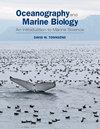Role, routes and effects of manganese in crustaceans
1区 生物学
Q1 Agricultural and Biological Sciences
引用次数: 49
Abstract
This review provides an overview of the role, routes and effects of manganese in aquatic crustaceans. Manganese is a naturally abundant metal in marine and freshwater sediments where it is involved in a large number of chemical processes. Although sediments contain high natural concentrations of manganese, the potential danger to benthic organisms has been neglected in studies to date. Manganese bioavailability increases as the result of human impact and it accumulates in biota. Manganese may occur in toxic concentrations (10-20 mg l -1 ) in the bottom water of marine coastal areas after hypoxia, or more locally (e.g., close to industries) as well as in acidic lakes and aquaculture shrimp ponds. Though manganese is an essential metal, it is also an unforeseen toxic metal in the aquatic environment. Although the uptake and elimination of manganese is rapid, manganese affects processes that decrease the fitness of organisms. As manganese bioavailability increases, its uptake is predominately through the water. The midgut gland, nerve tissue, blood proteins and parts of the reproductive organs have the highest accumulation factors and are the main target tissues. The functional effects of manganese in aquatic environments are still sparsely investigated. Recent results show that the immune system, the perception of food via chemosensory organs and a normal muscle extension are affected at manganese concentrations observed in the field.锰在甲壳类动物中的作用、途径和影响
本文综述了锰在水生甲壳类动物中的作用、途径和影响。锰是一种天然丰富的金属,存在于海洋和淡水沉积物中,参与了大量的化学过程。虽然沉积物中含有高浓度的天然锰,但迄今为止的研究忽视了对底栖生物的潜在危险。锰的生物利用度因人类影响而增加,并在生物群中积累。在海洋沿海地区缺氧后的底水中,锰可能以有毒浓度(10-20 mg l -1)出现,或在局部(例如靠近工业)以及酸性湖泊和水产养殖对虾池中出现更多锰。虽然锰是一种必需的金属,但它也是水生环境中不可预见的有毒金属。虽然锰的吸收和消除是迅速的,但锰影响了降低生物体适应性的过程。随着锰生物利用度的增加,它的吸收主要是通过水。中肠腺、神经组织、血液蛋白和部分生殖器官的蓄积因子最高,是主要靶组织。锰在水生环境中的功能效应研究仍然很少。最近的研究结果表明,免疫系统、通过化学感觉器官对食物的感知和正常的肌肉伸展受到锰浓度的影响。
本文章由计算机程序翻译,如有差异,请以英文原文为准。
求助全文
约1分钟内获得全文
求助全文
来源期刊
自引率
0.00%
发文量
0
期刊介绍:
With increasing interest in the field and its relevance in global environmental issues, Oceanography and Marine Biology: An Annual Review provides authoritative reviews that summarize results of recent research in basic areas of marine research, exploring topics of special and topical importance while adding to new areas as they arise

 求助内容:
求助内容: 应助结果提醒方式:
应助结果提醒方式:


